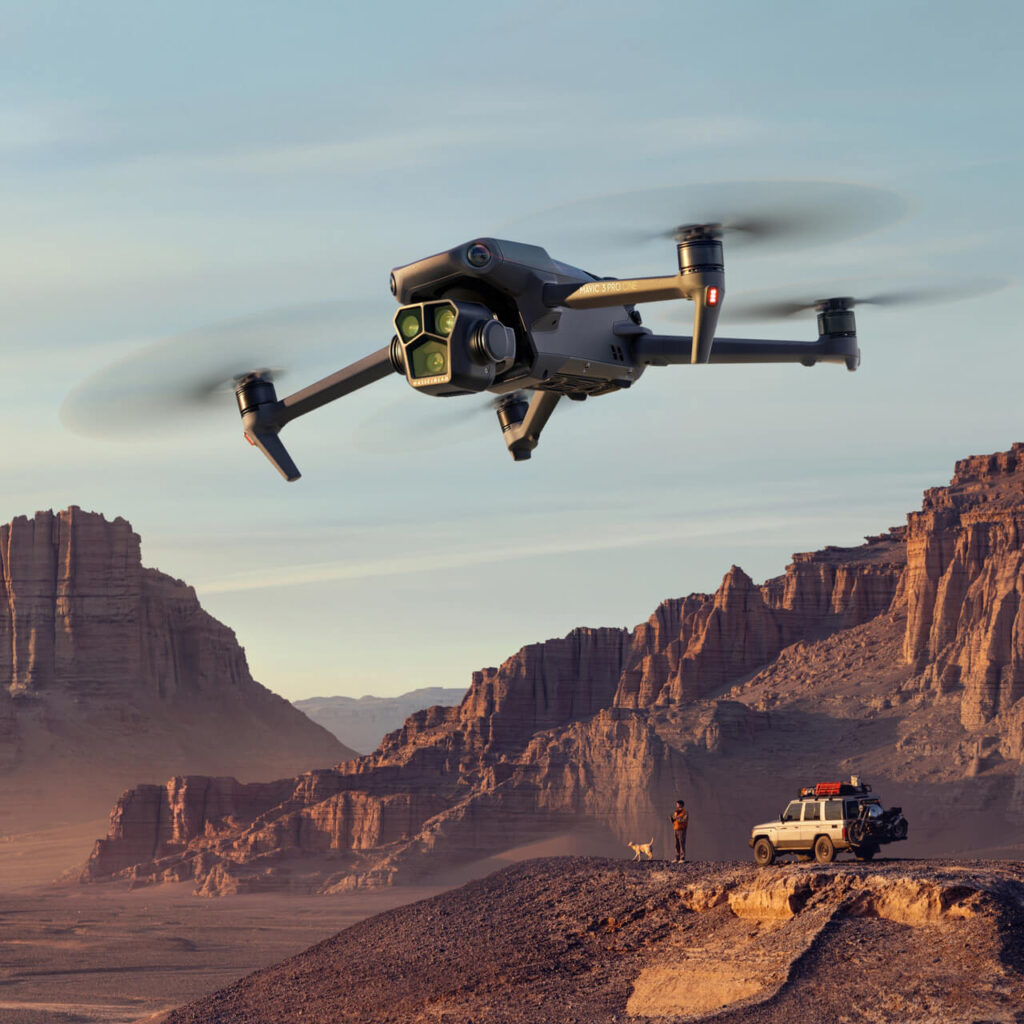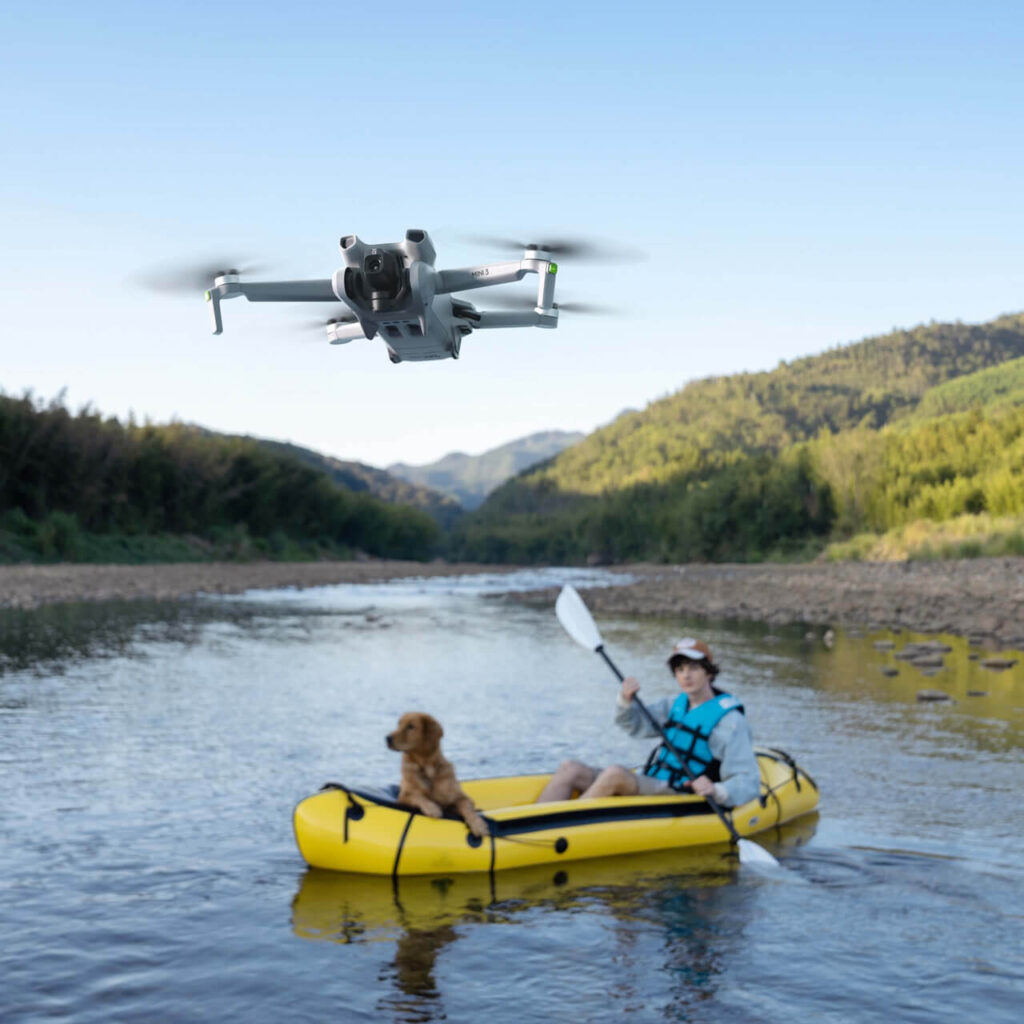The construction industry has witnessed a seismic shift in how site surveys are conducted. What once required weeks of manual labor and extensive ground crews can now be accomplished in hours with precision-engineered drones. This transformation isn’t just about speed—it’s about accuracy, safety, and cost-effectiveness that traditional surveying methods simply cannot match.
The Traditional Site Survey Challenge
For decades, construction site surveys relied heavily on ground-based teams equipped with theodolites, GPS equipment, and measuring tools. These teams would traverse challenging terrain, often putting themselves at risk while collecting data that could take weeks to process. The margin for human error was significant, and weather conditions frequently delayed progress.
Key Problems with Traditional Site Surveying:
• Time-intensive processes: Manual surveys requiring 2-3 weeks for completion
• High personnel costs: Multiple team members needed across vast construction sites
• Safety risks: Workers exposed to unstable terrain, active machinery, and structural hazards
• Weather dependencies: Rain, fog, and extreme conditions halting operations
• Data processing delays: Additional weeks required to convert raw data into usable formats
• Inconsistent accuracy: Human error leading to measurement discrepancies
• Limited accessibility: Difficulty reaching dangerous or remote areas of construction sites
The financial implications were equally concerning. Ground survey teams required substantial investment in personnel, equipment, transportation, and time. A comprehensive site survey could easily consume 15-20% of a project’s preliminary budget, with additional costs incurred for resurveys when discrepancies emerged.
The Drone Revolution in Construction
Modern construction drones have fundamentally changed this landscape. These sophisticated machines combine advanced imaging technology, GPS precision, and automated flight patterns to deliver survey data that surpasses traditional methods in both accuracy and comprehensiveness.
Featured Professional Site Survey Drones
| Feature | DJI Phantom 4 RTK | Autel EVO II Pro RTK V3 |
|---|---|---|
| Positioning Accuracy | ±1.5cm horizontal, ±3cm vertical | ±1cm horizontal, ±2cm vertical |
| Camera Resolution | 20MP, 1″ CMOS sensor | 20MP, 6K video capability |
| Flight Time | 30 minutes | 40 minutes |
| RTK Capability | Built-in RTK module | Advanced RTK with base station |
| Obstacle Avoidance | 5-direction sensing | 12-direction sensing |
| Weather Resistance | IP43 rating | IP43 rating |
| Data Processing | DJI Terra software | Autel Explorer app |
| Price Range | $6,000 – $8,000 | $8,000 – $10,000 |
The DJI Phantom 4 RTK represents a breakthrough in construction surveying technology. This drone integrates Real-Time Kinematic positioning, delivering centimeter-level accuracy that rivals expensive ground-based survey equipment. Its advanced obstacle sensing system allows safe operation in complex construction environments, while the high-resolution camera captures detailed imagery that enables precise measurements and 3D modeling.
Similarly, the Autel EVO II Pro RTK V3 has established itself as a formidable competitor in the professional surveying market. This drone features a 6K camera system, extended flight time, and robust RTK capabilities that ensure survey data meets the stringent requirements of modern construction projects. Its modular design allows for quick sensor swaps, making it adaptable to various surveying needs within a single project.
Precision That Matters
The accuracy delivered by modern survey drones has reached levels that were previously achievable only through expensive, time-intensive ground operations. RTK-enabled drones can achieve horizontal accuracy within 1-3 centimeters and vertical accuracy within 3-5 centimeters under optimal conditions.
Accuracy Comparison: Drones vs Traditional Methods
| Measurement Type | Traditional Surveying | RTK Drone Surveying | Improvement Factor |
|---|---|---|---|
| Horizontal Accuracy | ±5-10cm | ±1-3cm | 3-5x better |
| Vertical Accuracy | ±8-15cm | ±3-5cm | 2-3x better |
| Data Collection Speed | 5-10 acres/day | 100-200 acres/day | 20-40x faster |
| Point Density | 100-500 points/acre | 10,000+ points/acre | 20-100x denser |
This precision translates directly into cost savings during construction. Accurate initial surveys prevent costly mistakes during foundation work, reduce material waste, and ensure that structural elements align perfectly with design specifications. The ability to create detailed 3D models from drone-captured data enables engineers to identify potential issues before they become expensive problems.
Furthermore, drone surveys provide comprehensive coverage that ground teams often miss. Aerial perspectives reveal topographical features, drainage patterns, and access challenges that may not be apparent from ground level. This holistic view enables better project planning and more accurate cost estimation.
Safety First: Reducing Human Risk
Construction sites are inherently dangerous environments, and traditional surveying exposed personnel to numerous hazards. Unstable terrain, active machinery, electrical hazards, and structural risks posed constant threats to survey teams.
Safety Benefits of Drone Site Survey:
• Zero personnel exposure: Eliminates human presence in dangerous areas
• Remote operation capability: Operators maintain safe distance from hazards
• Unstable terrain access: Surveys possible on slopes, soft ground, and unstable surfaces
• Height advantage: Inspection of tall structures without scaffolding or climbing
• Active site operation: Surveys conducted without disrupting construction work
• Emergency response: Rapid assessment of accident sites or structural concerns
• Weather independence: Reduced weather-related safety risks for personnel
Drone technology eliminates most of these risks by removing human presence from dangerous areas. Drones can safely survey unstable slopes, inspect tall structures, and navigate around active construction equipment without putting personnel at risk. This safety improvement has significant implications for project insurance costs and regulatory compliance.
The risk reduction extends beyond immediate physical dangers. Drone surveys can be conducted more frequently without disrupting construction operations, enabling project managers to monitor progress and identify safety concerns before they escalate into serious incidents.
Speed and Efficiency: Time is Money
Traditional site surveys could take weeks to complete and additional weeks to process into usable data. Modern drones can survey hundreds of acres in a single day, with processed data available within hours of flight completion.
Timeline Comparison: Traditional vs Drone Surveying
| Project Phase | Traditional Method | Drone Method | Time Savings |
|---|---|---|---|
| Site Setup | 1-2 days | 30 minutes | 95% reduction |
| Data Collection | 10-14 days | 1-2 days | 85% reduction |
| Data Processing | 7-10 days | 1-2 days | 80% reduction |
| Report Generation | 3-5 days | Same day | 90% reduction |
| Total Project Time | 21-31 days | 2-5 days | 85% reduction |
This speed advantage enables more responsive project management. Changes in project scope, unexpected site conditions, or design modifications can be quickly assessed through rapid drone surveys. Real-time data availability allows construction teams to make informed decisions without waiting for lengthy survey reports.
The efficiency gains are particularly pronounced in large-scale projects. Where traditional methods might require multiple survey teams working simultaneously across different site areas, a single drone can systematically cover the entire project area while maintaining consistent data quality standards.
Integration with Modern Construction Technology
Drone survey data integrates seamlessly with Building Information Modeling (BIM) systems, Computer-Aided Design (CAD) software, and project management platforms. This integration creates a unified digital ecosystem where survey data directly informs design decisions and construction planning.
Compatible Software and Platforms:
• BIM Integration: Autodesk Revit, Bentley MicroStation, Tekla Structures
• CAD Software: AutoCAD Civil 3D, Trimble Business Center, Leica Infinity
• Photogrammetry: Pix4D, Agisoft Metashape, DroneDeploy, Autodesk ReCap
• Project Management: Procore, PlanGrid, Fieldwire, Oracle Aconex
• GIS Platforms: ArcGIS, QGIS, Global Mapper, Bentley Map
• Cloud Processing: Amazon Web Services, Microsoft Azure, Google Cloud Platform
The compatibility between drone-generated point clouds and modern construction software eliminates the time-consuming data conversion processes that were necessary with traditional survey methods. Project teams can work with real-time, accurate site data throughout the construction lifecycle.
This integration capability extends to quality control and progress monitoring. Regular drone surveys can track construction progress against planned timelines, identify deviations from design specifications, and provide visual documentation for stakeholder communications.
Cost-Benefit Analysis: The Numbers Don’t Lie
The financial advantages of drone surveying become apparent when examining total project costs. While the initial investment in professional survey drones like the DJI Phantom 4 RTK or Autel EVO II Pro RTK V3 may seem substantial, the return on investment typically materializes within the first few projects.
Cost Breakdown: Traditional vs Drone Surveying
| Cost Category | Traditional Survey (per project) | Drone Survey (per project) | Savings |
|---|---|---|---|
| Personnel | $25,000 – $40,000 | $5,000 – $8,000 | 70-80% |
| Equipment Rental | $8,000 – $12,000 | $0 (owned equipment) | 100% |
| Transportation | $3,000 – $5,000 | $500 – $1,000 | 75-85% |
| Processing Time | $15,000 – $20,000 | $2,000 – $3,000 | 85-90% |
| Insurance/Risk | $5,000 – $8,000 | $1,000 – $2,000 | 75-80% |
| Total Project Cost | $56,000 – $85,000 | $8,500 – $14,000 | 75-85% |
Labor costs represent the most significant savings opportunity. A drone survey that would require a five-person ground team for two weeks can be completed by a single operator in one or two days. The reduction in personnel costs, transportation expenses, and equipment rentals quickly justifies the drone investment.
Insurance and safety-related cost reductions provide additional financial benefits. Fewer personnel hours in hazardous environments translate to lower insurance premiums and reduced liability exposure. The improved safety record achievable through drone surveying can significantly impact long-term project costs.
Connecting the Construction Technology Ecosystem
The adoption of drone technology in construction surveying reflects a broader industry transformation toward automated, data-driven operations. Just as we’ve explored how drones can address India’s agricultural labor challenges through precision farming techniques, the construction industry is leveraging similar technologies to overcome traditional operational limitations.
Technology Integration Benefits:
• Multi-purpose platforms: Same drones used for surveying, monitoring, and security
• Shared data systems: Integrated databases supporting multiple construction functions
• Unified training programs: Single certification covering multiple drone applications
• Consolidated equipment costs: Reduced investment through shared technology platforms
• Streamlined operations: Simplified workflows across different project phases
• Enhanced ROI: Maximum return through comprehensive technology utilization
The surveillance and monitoring capabilities that make drones invaluable for construction site security in 2025 naturally extend to surveying applications. The same platforms that provide continuous site monitoring can capture detailed survey data, creating synergies that maximize technology investments.
This convergence of applications demonstrates how drone technology is becoming an integral part of modern construction operations rather than a specialized tool for specific tasks. Projects that implement comprehensive drone programs for surveying, monitoring, and security realize greater benefits than those using drones for isolated applications.
The Future of Construction Surveying
As drone technology continues advancing, we can expect even greater integration with construction workflows. Artificial intelligence and machine learning algorithms are beginning to automate data analysis, reducing the time between data capture and actionable insights.
Emerging Technologies in Drone Surveying:
• LiDAR integration: Enhanced accuracy for complex terrain and vegetation areas
• Multispectral imaging: Material analysis and condition assessment capabilities
• AI-powered analysis: Automated feature recognition and measurement extraction
• Real-time processing: Instant data availability during flight operations
• 5G connectivity: High-speed data transmission for immediate analysis
• Autonomous operations: Fully automated survey missions with minimal human intervention
• Predictive analytics: Trend analysis for proactive project management
Emerging technologies like LiDAR integration, multispectral imaging, and advanced photogrammetry will further enhance survey accuracy and expand the types of data available to construction teams. These advances will make drone surveying even more indispensable for complex construction projects.
The regulatory environment is also evolving to accommodate increased drone usage in construction. As aviation authorities develop more sophisticated frameworks for commercial drone operations, construction companies will have greater flexibility in implementing comprehensive drone programs.
Making the Transition
Construction companies considering the transition to drone-based surveying should evaluate their specific needs against available technology options. The DJI Phantom 4 RTK offers an excellent entry point for companies new to professional drone surveying, while the Autel EVO II Pro RTK V3 provides advanced capabilities for organizations with complex surveying requirements.
Implementation Checklist:
• Needs assessment: Evaluate current surveying requirements and pain points
• Technology selection: Choose appropriate drone platforms and software solutions
• Training programs: Develop certification plans for operators and data analysts
• Regulatory compliance: Obtain necessary permits and insurance coverage
• Integration planning: Design workflows connecting drone data to existing systems
• Pilot projects: Start with smaller projects to validate processes and procedures
• Scaling strategy: Plan for expanding drone operations across multiple projects
Training and certification requirements should be factored into implementation plans. While drone operation is generally more straightforward than traditional surveying equipment, professional applications require proper training to ensure data quality and regulatory compliance.
The integration with existing project management systems should also be carefully planned. Successful drone surveying programs require seamless data flow between capture, processing, and application phases.
Conclusion
The shift toward drone-based site surveys represents more than a technological upgrade—it’s a fundamental reimagining of how construction projects gather and utilize spatial data. The combination of improved accuracy, enhanced safety, reduced costs, and faster data delivery makes drone surveying an obvious choice for forward-thinking construction companies.
As the industry continues embracing digital transformation, those who adopt comprehensive drone programs for surveying, monitoring, and security will maintain competitive advantages over organizations clinging to traditional methods. The question is no longer whether to implement drone surveying, but how quickly organizations can make the transition while maximizing the benefits this technology provides.
The construction industry’s trust in drone technology for site surveys reflects a broader recognition that traditional methods no longer meet the demands of modern project management. With proven platforms like the DJI Phantom 4 RTK and Autel EVO II Pro RTK V3 delivering consistent, accurate results, the transition to drone-based surveying has become a strategic imperative rather than an experimental consideration.




